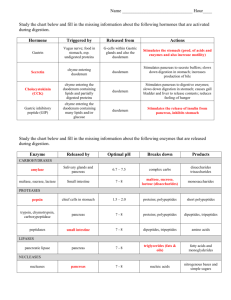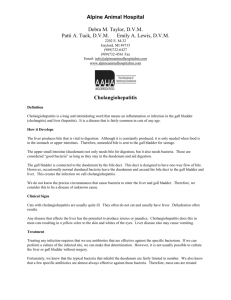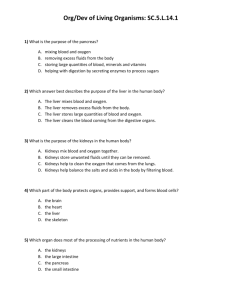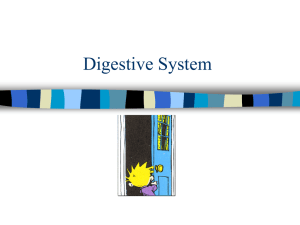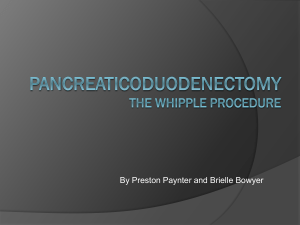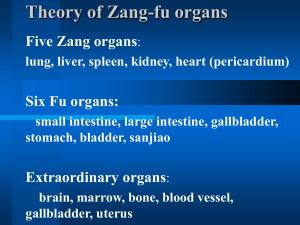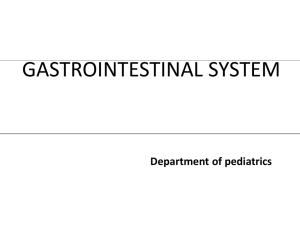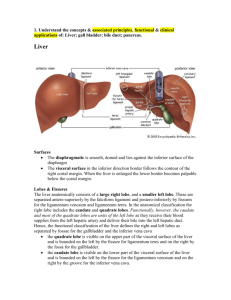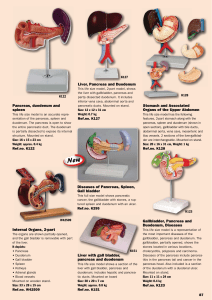Accessory Organs & Homeostasis
advertisement
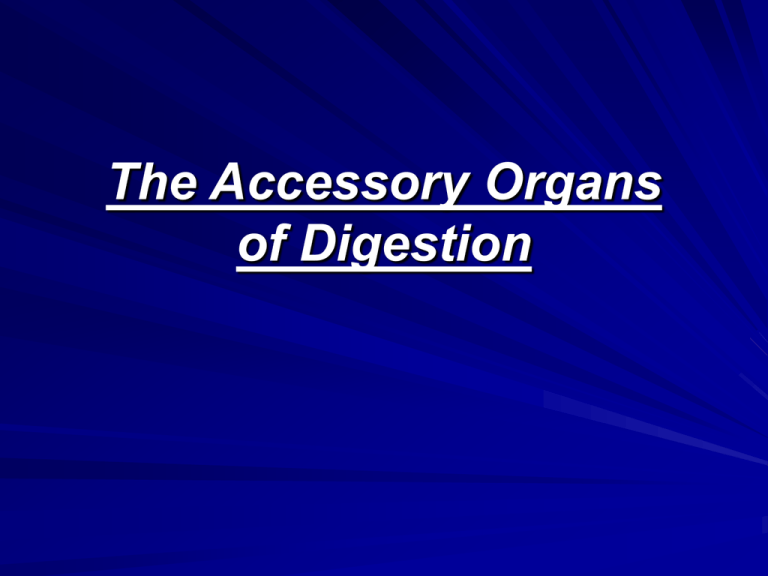
The Accessory Organs of Digestion What is an “Accessory” Organ? The digestive system has several accessory organs that aid in the process of digestion. An accessory organ is one that helps with the breakdown of food without the food ever traveling through them – they are not part of the digestive tract or tube. The accessory organs of digestion include: 1. 2. 3. 4. Salivary Glands Liver Gall Bladder Pancreas The Salivary Glands The salivary glands are small organs found both above and below the oral cavity. The secrete a watery substance, called saliva, that contains both amylase and mucus. Amylase is an enzyme that digests starch – a polysaccharide made of many glucose molecules linked together. The mucus is a thicker fluid that lubricates the food so it can pass through the digestive tube more easily. The Liver & Gall Bladder The liver is the second largest organ on the body and it’s located just below the ribs and to the right. The main role of the liver is to produce bile – a fluid that aids in the breakdown of fats. The liver also detoxifies the blood while leaving the nutrients in active circulation. Alcohol is a toxic substance that the liver breaks apart into less harmful molecules. If too much alcohol is consumed on an ongoing basis, the hepatocytes (liver cells) can die. The gall bladder is a small sac, found just under the liver, that stores bile. The liver and gall bladder connect to the digestive tract using the common bile duct – a tube that extends down into the duodenum - the first part of the small intestine. The Liver & Gall Bladder The Pancreas The pancreas is a bubbly, leaf-shaped organ that lies just below the stomach. It secretes a great deal of digestive enzymes – more than any other organ. The pancreas has the pancreatic duct which is a small tube that leads to the first section of the small intestine – the duodenum. This tube delivers enzymes directly to the chyme as it travels in the small intestine. The pancreas is responsible for such enzymes as lipases, carbohydrases and proteases. The pancreas is also an acid-fighting super hero. It releases a basic solution (bicarbonate) into the duodenum as chyme enters it from the stomach. Chyme is the mixture of food and acid that exits the stomach. The small intestine and other organs can’t handle the acidic content in chyme so its acidic properties are neutralized by the bicarbonate solution. Chemical Digestion Amylase Pepsin Trypsin Lipase Carbohydrase Hydrochloric Acid (HCl) Bile Bicarbonate Starch in mouth and after. Proteins in Stomach. Proteins in Duodenum (SI). Fats in Duodenum (SI). Carbs in Duodenum (SI). All biomolecules in stomach. Emulisfy Fats in Duodenum. Neutralize stomach acid found in chyme – acts in duodenum. Homeostasis & Blood Sugar Homeostasis is the process of maintaining a stable internal environment despite changes in the external environment. Your body operates under a set of normal levels and ranges. These levels and ranges apply to everything from body temperature, to heart rate, blood pH and blood sugar. (These are only a few!) If the one of these normal levels strays to far above or below the normal range – a health problem (or death!) may ensue. This is why the body uses a system called negative feedback to assist in homeostasis. Negative Feedback Negative feedback is a method of maintaining homeostasis whereby the system on acts when there is a perceived threat to normal body function. (“If it ain’t broke – don’t fix it & save energy.”) A negative feedback system has three parts: – Monitor – checks normal levels in body – looks for things to be out of the ordinary. (Usually nerve of brain.) – Coordinating Centre – evaluates threat and brings about corrective response. (Usually brain.) – Regulator – Acts to correct the problem as per direction from coordinating centre. (Organs & Muscles.) Your home’s temperature is regulated this way! Regulating Blood Sugar The body’s normal level for glucose in the blood (blood sugar) is 4-6mmol/L. If the blood sugar gets too high… – Pancreas produces and secretes insulin into the blood stream. This causes cells to adopt glucose from the blood and helps to lower blood sugar levels. – The liver is told to remove glucose from the blood and make glycogen from it. Again, more sugar withdrawn from the blood and levels go down. If the blood sugar gets too low… – The pancreas produces and secretes glucagon which goes to the liver and begins the breakdown of glycogen into glucose which is released into the blood. That’s All I Got…
